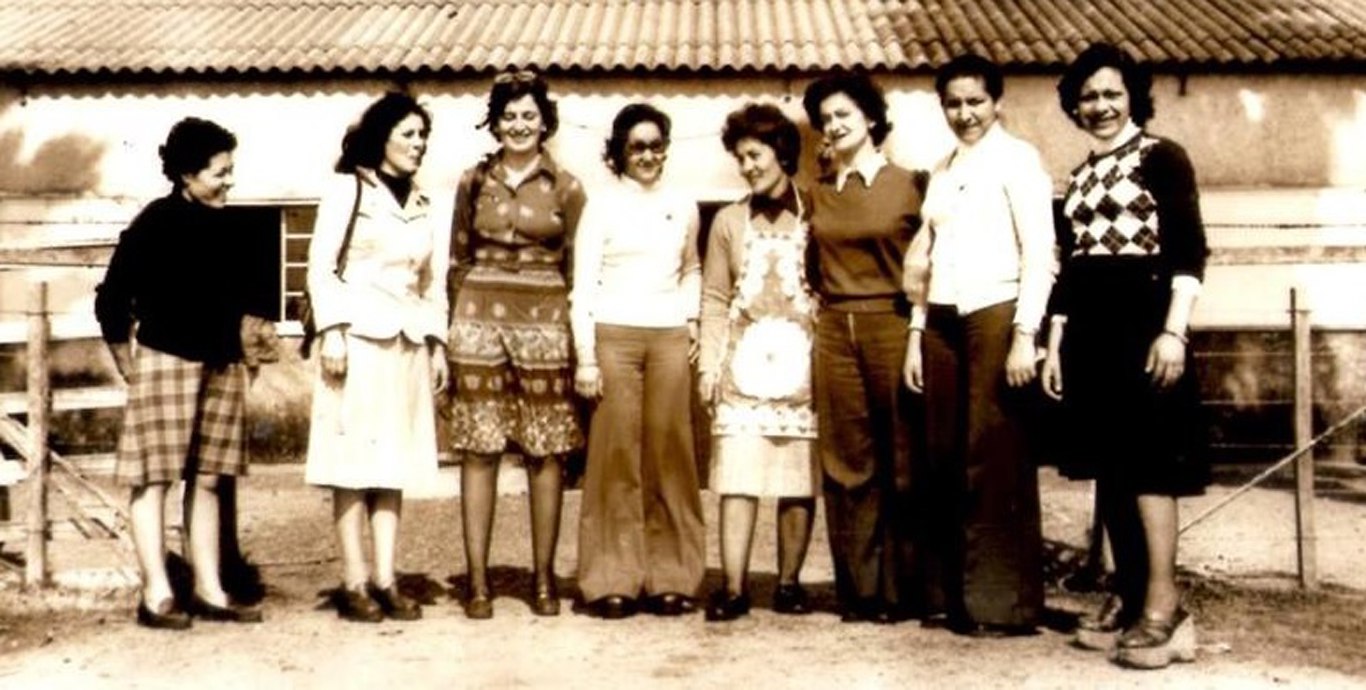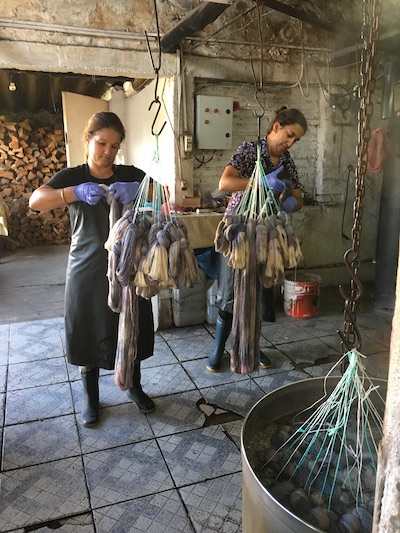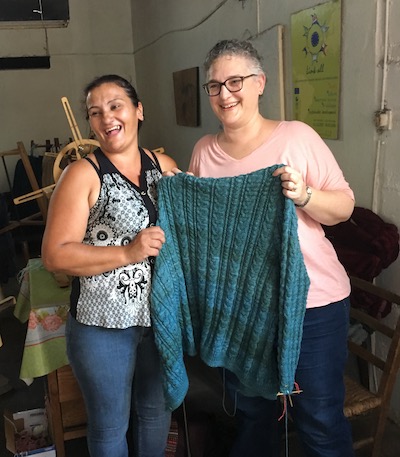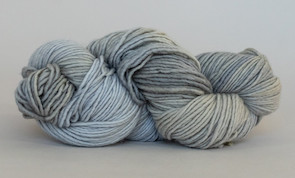The Colorful Story of Manos del Uruguay
Posted by Cindy on Feb 3rd 2023
The first yarn I ever purchased was a few skeins of marigold wool by Manos del Uruguay. I had just learned to knit and was embarking on my inaugural scarf. The subtle variations in color of the Manos drew me in, and I was intrigued by the tag, on which the artisan who dyed it had handwritten her name. As I formed my stitches, I wondered about the woman and the organization that had created this gorgeous yarn.
This month, the Endless Skein is shining a spotlight on Manos del Uruguay. I welcomed the opportunity to interview Lisa Myers, owner of Fairmount Fibers, the US distributor of Manos yarn. Read on to learn more about Manos' unique history and how you can meet the artisans in Uruguay!
Please tell us the story of how Manos del Uruguay got started.
This is best answered on the Manos website:
"In 1968 five friends, Olga Pardo Santayana de Artagaveytia, Sara Beisso de Souza, Dora Muñoz de Cibils, María del Carmen Bocking and Manila Chaneton de Vivo shared their concern for the hard life and lack of opportunities of rural women back at that time.
"They planned on selling the simple objects that the women were already making, wool blankets and horse saddle pads. They sold well and soon they were organizing workshops all around the country.
"With the aid of social workers they committed to give the women the necessary tools to organize the production, administrate the cooperatives and deal with suppliers and customers. While providing support in the difficult task of balancing work and family. The founders' vision was always that Manos should not only be a work source, but a means of women’s empowerment and development.
"Forming leaders that would move the organization forward was a main priority. Manos founders were great women that shared a huge work capacity and the conviction that no dream is too big.
"Nowadays all of the founders have passed away, but their memory and legacy is still with all of us in Manos."

How does the cooperative model work?
Again, from the Manos website:
"Manos del Uruguay has a social aim and we are a Non for profit organization.
We are organized in 12 cooperatives, each one is a workshop located in a small village of Uruguay’s countryside.
"The artisans are the owners of the company and Manos' profits are shared among the cooperatives or re-invested in the organization. The cooperatives have strong bonds with the communities where they are inserted, having a positive impact in society and families is very important for us."
The key thing, in my opinion, is that the five original founders arranged for each working group to be self-sufficient. This has meant that the organization sustains itself through changes in personnel, rather than relying on one owner. And the 12 cooperatives are in turn organized into a cooperative with a Board of Directors elected from among the artisans, to make decisions that affect the whole system.

What are the objectives of the Manos Cooperatives (besides making gorgeous yarn)?
The original objective was and still is: to provide economic and social opportunities for rural women in Uruguay. These women live in small towns and villages, without much access to jobs or education. Manos works with (or teaches) traditional craft skills such as spinning, dyeing, weaving, and knitting so that its members can earn, grow, and develop within their social and family setting.
How has Manos changed over the years?
In so many ways! Manos began by selling their wares domestically, often to tourists in Montevideo. Now, their products are exported to department stores in the Americas and Europe; they do custom production work for some of the world's most famous design houses; and their yarns are distributed all over the world. They've grown from one cooperative to 12. Their founding values have remained the same, but they've been officially recognized through membership in the WFTO (World Fair Trade Organization).
What are the most popular yarn bases and/or colorways?
In the US, worsted-weight Maxima is most popular, with the two fingering-weight yarns, Alegria and Fino, coming in right behind it. But in the last year, we've seen Franca, our super-squishy Merino superbulky, pull into second place. Maxima's most popular colors are really a two-part story: in the semi-solid range, neutrals and soft pale colors (like Foil, Sand, and Oxygen) are at the top of the list, but the space-dyed range goes to strong, rich colors like Chrysanthemum and last season's breakout hit, Mumbai. For Franca, Party is the runaway winner (and no wonder -- it's not only terrifically cheerful in itself, it seems to go well with so many other colors!)
If you asked the same question in Europe, though, you'd get very different answers -- I know from talking to my fellow distributors that the skinniest yarns, Alegria and Marina, sell best there; and we often find that a color that goes very slowly here is a mainstay there. I would have thought that websites like Instagram and Ravelry would have meant that knitters all over were seeing and responding to the same trends, but apparently not: there are real regional variations.
What sort of ready-to-wear items does Manos produce? Is that a big portion of Manos’ business?
All sorts! There are knitted hats and mittens as well as sweaters and ponchos etc., plus woven scarves and jackets and home décor (like throws and pillows). And between the work they sell under their own label and the pieces they produce for designers, handknitting yarn is actually a small segment of their production. But they appreciate the yarn market because it's steady -- yarn sales may go up or down a few percentage points, but a big designer may want thousands of a particular design one year, and then move away from sweaters altogether the next. We help buffer the unpredictability of the fashion sector.
![]()
From the Manos archives, pictures of John Lennon and Robert Redford wearing Manos!
As the US distributor for Manos yarns, do you get to visit Uruguay? Any stories you can share?

I don't *have* to go to Uruguay -- in addition to lots of email and video calls, I see my contacts from the central office at trade shows in the US and Europe, where we can also meet with the other distributors. But I *love* to go to Uruguay, and I think everyone else would love it too, so I've organized trips every year or two for knitters (and non-knitters!) to tour the countryside, visit the coops where our yarn is made, and meet the artisans who do the work. This year's trip is already booked, but if you join our mailing list, you'll hear as soon as we have info about the next one. It's a wonderful experience to show your project to the woman whose name is on the skein tag, to show her what you've made with what she made. It doesn't matter if you don't speak Spanish or she doesn't speak English, you're both makers, and she's as excited to see what her work has become as you are to see where and how it began.
What’s next for Manos?
Have you seen the Alegria Superpool kits? We've used a dye technique that deliberately drives the colors to stripe and spiral, and put up each skein with a 20g mini-skein in a contrasting color for cuffs, heels, and/or toes. There are 6 bright, circus-themed colorways -- so much fun!
We've also got two new yarns coming for next Fall. I can't tell you much about them yet, but they're meant to be used together, and I think they fill a real gap in our line.
The Endless Skein will be carrying the Alegria Superpool kits. Look for them on LYS Day!
Manos del Uruguay Fino and Fino Mini Sets are our Featured Products this month, on sale through the end of February 2023!


